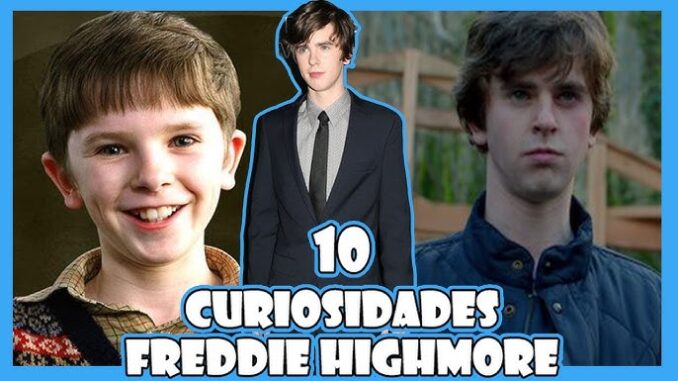
When Freddie Highmore first appeared on cinema screens as a wide-eyed child in “Finding Neverland” (2004), few could have predicted the remarkable trajectory his career would take. The British actor, with his disarming smile and precocious talent, has navigated the treacherous waters of child stardom to emerge as one of the most versatile and respected actors of his generation. His journey from portraying innocent children to deeply troubled teens and finally to complex adults offers a fascinating study in artistic growth and psychological depth.
Highmore’s breakthrough came alongside Johnny Depp in “Finding Neverland,” where he played Peter Llewelyn Davies, one of the boys who inspired J.M. Barrie’s “Peter Pan.” His performance—vulnerable, heartbreaking, and wise beyond his years—earned him critical acclaim and established him as a child actor of unusual sensitivity. Director Marc Forster later remarked that Highmore possessed “an old soul,” capable of understanding emotional nuances that escaped many adult actors.
This quality caught the attention of Tim Burton, who cast Highmore as Charlie Bucket in “Charlie and the Chocolate Factory” (2005). The role positioned Highmore as the moral center of the film—a child whose inherent goodness stands in stark contrast to the selfishness and materialism of the other characters. Through Charlie’s wide-eyed wonder and unshakable decency, Highmore created a character that anchored the film’s fantastical elements in emotional reality. His chemistry with Depp, playing the eccentric Willy Wonka, demonstrated his ability to hold his own against established stars.
The transition from child to adult roles often derails promising careers, but Highmore approached this challenge with characteristic thoughtfulness. Rather than rushing into inappropriate adult roles or clinging to childish ones, he temporarily stepped back from Hollywood to complete his education at Cambridge University, where he studied Arabic and Spanish. This hiatus provided not only academic knowledge but also the life experience and perspective that would inform his later, more complex roles.
His return to acting marked a dramatic departure from his earlier work. In “Bates Motel” (2013-2017), a prequel series to Alfred Hitchcock’s “Psycho,” Highmore took on the daunting challenge of portraying Norman Bates, cinema’s most famous mama’s boy and serial killer. What could have been a one-dimensional portrayal of emerging psychopathy became, in Highmore’s hands, a nuanced exploration of mental illness, familial entanglement, and the gradual disintegration of self.
“I was interested in finding the humanity in Norman,” Highmore explained in a 2017 interview. “Understanding how someone becomes the person they are—the combination of nature, nurture, and circumstance that shapes us all—that’s what drew me to the role.” His portrayal earned him Critics’ Choice Television Award nominations and established him as an actor capable of extraordinary psychological depth.
If “Bates Motel” demonstrated Highmore’s ability to portray darkness and moral ambiguity, his subsequent role as Dr. Shaun Murphy in “The Good Doctor” (2017-present) revealed his capacity for portraying neurodiversity with sensitivity and nuance. As a surgeon with autism and savant syndrome, Highmore’s character navigates a professional environment that often struggles to accommodate his differences. The role required intense research and preparation, with Highmore consulting with autism researchers and individuals on the spectrum to ensure an authentic portrayal.

“I wanted to show Shaun as a complete person, not defined solely by his autism,” Highmore noted. “He has the same desires, frustrations, and ambitions as anyone else, even if he expresses them differently.” This commitment to humanizing rather than sensationalizing difference has made “The Good Doctor” not just compelling television but an important contribution to representation of neurodiversity in popular media.
Throughout these transformations—from innocent child to troubled teen to complex adult—certain qualities have remained consistent in Highmore’s work: emotional intelligence, meticulous attention to detail, and an ability to communicate profound feeling through subtle expression. Whether portraying the wide-eyed wonder of Charlie Bucket or the internal struggles of Norman Bates, Highmore invites viewers into the inner lives of his characters with extraordinary intimacy.
Perhaps most remarkably, Highmore has achieved this evolution while maintaining a reputation for humility and professionalism rare in Hollywood. Directors consistently praise his preparation and collaborative spirit, while co-stars note his generosity as a scene partner. In an industry where ego often accompanies success, Highmore’s continued groundedness speaks to the same emotional intelligence that makes his performances so compelling.
As Freddie Highmore continues to evolve as an actor, his career stands as testimony to the power of patience, selectivity, and deep psychological engagement with character. From the gardens of Neverland to the halls of St. Bonaventure Hospital, he has created a body of work united not by genre or type, but by emotional authenticity and thoughtful exploration of the human condition. In doing so, he has transformed from a promising child actor into something much rarer: an artist whose work expands our understanding of ourselves.
